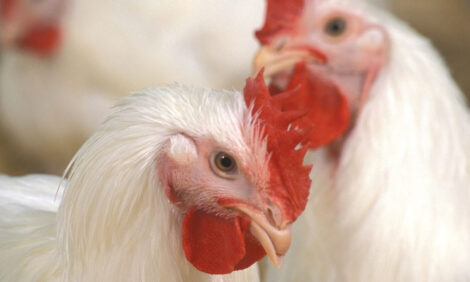



Comparison of Meat Quality Characteristics and Oxidative Stability between Conventional and Free-range Chickens
Free-range systems were found by researchers at the University of Bologna to modify the quality of chicken meat. They also demonstrate the effects of the bird's genetics and nutrition on meat quality characteristics.In a paper published in Poultry Science, first-named author, A Funaro and colleagues at the University of Bologna in Italy explain that the aim of their research was to evaluate quality traits and oxidative stability of meat products from free-range (FR) and conventionally (C) raised chickens as they actually reach consumers in the Italian retail market.
Free-range female and male chickens (n=1,500 + 1,500), medium-growing ISA strain, were raised under commercial conditions for 56 (1.8kg of live weight) and 70 days (3.1kg), respectively; C female and male birds (n=5,000 + 5,000) were a fast-growing hybrid (Ross 708) and were separately raised for 39 (1.9kg live weight) and 50 days (3.1kg), respectively.
A total of 96 chickens (equally divided by production system and sex) were slaughtered in two separate sessions to obtain the main two commercial categories (rotisserie and cut-up, respectively).
After slaughtering, 12 carcasses of each treatment group were randomly selected and used to assess quality properties, chemical composition and oxidation stability of breast and leg meat.
The C birds had significantly higher carcass and breast meat yield, whereas FR had higher wing and leg yields. The FR birds exhibited higher water-holding capacity in both breast and leg meat. Although shear force did not differ in breast meat, legs from FR birds were tougher.
Fatty acid composition of FR breast and thigh meat of both categories were characterised by a higher polyunsaturated fatty acid n-6-/n-3 ratio. In general, a low lipid oxidation level - i.e. peroxide value less than 1.3mEq oxygen per kg of lipid and TBA-reactive substances below 0.2mg malondialdehyde per kg of sample - was found in breast and legs, regardless of the commercial category.
However, the C system significantly increased peroxide value in rotisserie thigh meat, whereas FR led to a significantly higher TBA reactive substances in breast meat.
Funaro and co-authors conclude their results demonstrated that free-range systems can modify the properties of chicken meat. They also highlight the importance of the bird's genetic background when selecting nutritional strategies to improve meat quality traits and oxidative stability in poultry meat.
Reference
Funaro A., V. Cardenia, M. Petracci, S. Rimini, M. T. Rodriguez-Estrada and C. Cavani. 2014. Comparison of meat quality characteristics and oxidative stability between conventional and free-range chickens. Poultry Science. 93: 1511-1522. doi: 10.3382/ps.2013-03486
June 2014








